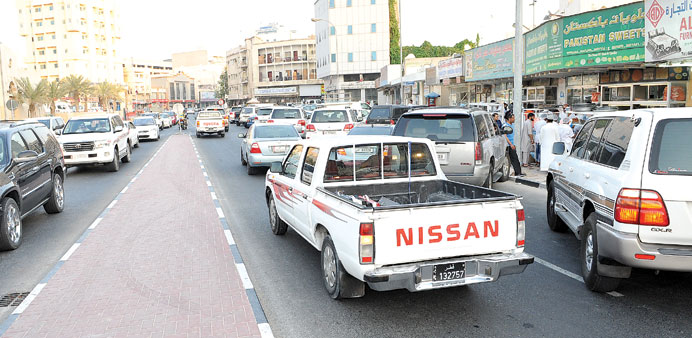By Steff Gaulter
Welcome to July, statistically the hottest month in Qatar. After struggling through the heat of last month, you probably didn’t want to hear that, but I’m afraid it’s true. It’s definitely a trying time of year for Ramadan to fall. Fasting is never easy, but in this heat it is even more difficult than usual.
The hottest part of June was actually quite early in the month. Between 9th and 11th, the temperatures soared over 45oC (113oF) each day. On the 10th, the temperatures climbed to an eye-watering 48oC (118oF). The Qatari Meteorological Department released a statement warning of hot weather, but unfortunately this was issued on the day the heat eased.
People took to Twitter claiming that it was the hottest weather they’d ever experienced in Doha, and they’ve lived here since time began. I think what this really goes to show is that people have quite short memories! We all know that the weather is always hot at this time of year and some years are slightly less hot than others, but this year wasn’t that extreme. In fact June this year was almost identical to June 2011, which saw a run of hot weather towards the beginning of the month, and a maximum temperature of 48oC on 8th.
A lot of people called our hot spell this year a heatwave, but officially it didn’t quite measure up. Like most meteorological terms, a heatwave has an official definition. According to the World Meteorological Office a heatwave has to be a hot spell in which the temperature is five degrees higher than the average for five days or more.
The average high temperature in June in Doha is 41.2oC (106oF), so for a real heatwave we’d need to have temperatures over 46oC (115oF) for five days. So I’m afraid our little hot spell of just three days doesn’t even qualify! It was hot, but it wasn’t a heatwave.
People often complain to me about the temperatures that are reported in Doha, saying that they must be too low. There is a strange, but persistent rumour that the meteorologists here are not allowed to report temperatures over 50oC. I can honestly say that I have never been told what I can and what I can’t say in my reports when I present the weather in Doha.
The only reason that I don’t predict a temperature of 50oC, is because the temperature very rarely gets that high. The last time it happened was in July 2010. At that point, I reported it on Al Jazeera English, and it was also reported in the national newspapers here.
Another common grumble that I hear is that the car’s thermometer always reports a higher temperature than the official one. This is because the temperature that your car states is the result of a number of factors. It will vary depending on the colour of your car; black absorbs heat, so black cars generally show a higher temperature value.
It also depends on where the temperature gauge is situated in your car; if it is near the engine, it will be higher than it should really be. It also depends on the road surface; the dark surface of the road will reradiate the heat from the sun back towards your car.
Usually, you will notice that the temperature shown by the gauge of your car will drop by a few degrees after a few minutes of driving (assuming you are actually moving and not just stuck in traffic!). This is due to the air flowing over the engine of your car, and this temperature is more representative of the actual temperature.
So, my advice would be, wait a few minutes in flowing traffic and then look at the temperature gauge. That should give a more realistic reading, but it still might be a few degrees higher than the official temperature report for Doha. After all, the thermometer in your car is only ever supposed to be an estimate of the actual temperature, it simply isn’t taken in the strict environment that the official temperatures are.
Whatever the exact temperature is, at this time of year just about everyone would agree that it’s frankly too hot. The bad news is that the average maximum temperature in July is higher than in June, but the good news is that the difference isn’t much! It’s 41.5oC (107oC), rather than 41.2oC (106oF). However, the main reason that the difference is so small is the humidity is so much higher.
Currently the winds flow down from the northwest, and this air is generally dry. The northwesterly wind keeps the humidity low, but this wind becomes less prevalent from the middle of July onwards.
This is bad news for our weather. As soon as the northwesterly wind eases, the winds can turn easterly. When we have a wind from the east, it drags in humidity. The sun finds humid air more difficult to heat than dry air, as it has to heat the water in the air, as well as the air itself.
This means that when it is humid, thermometers will generally tell you it’s a lower temperature. However, the weather will feel more uncomfortable as the body finds it more difficult to regulate its temperature in humid air. As the humidity soars, it’s going to be a trying month for all of us, particularly those of us who are fasting.
My advice would be to avoid spending time outdoors as much as possible, and make sure you drink plenty of water from Iftar onwards.


